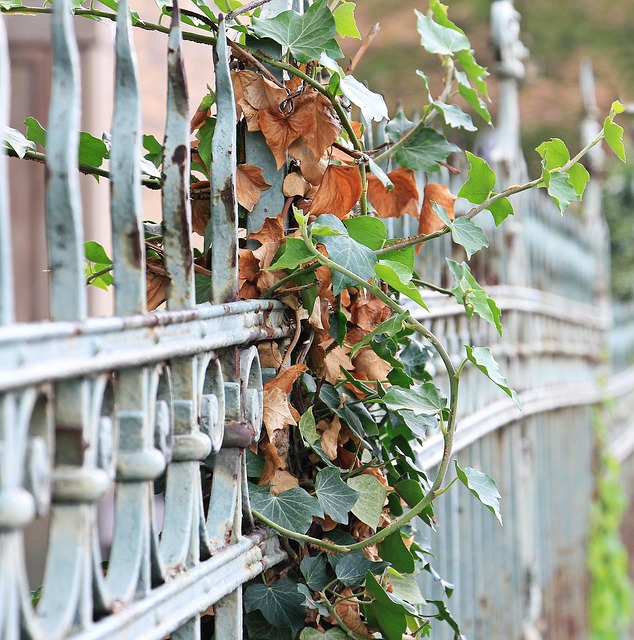For New Bedford, Massachusetts homeowners looking to enhance their outdoor space, DIY fence installation offers a cost-effective and rewarding project. This comprehensive guide provides essential tips and step-by-step instructions to navigate the process successfully. From understanding your fencing options specific to the New Bedford market to mastering the final touches and maintenance, this article equips you with the knowledge needed to install a sturdy and aesthetically pleasing fence. Get ready to transform your outdoor sanctuary!
- Understanding Your New Bedford Fence Options
- Measuring and Planning Your Fence Layout
- Preparing the Ground for Installation
- Assembling and Attaching Fence Panels
- Adding Gates and Fittings: A Step-by-Step Guide
- Final Touches and Maintenance Tips for Longevity
Understanding Your New Bedford Fence Options
When it comes to fencing your New Bedford, Massachusetts property, there are several options available to homeowners. The first step is to consider the purpose of the fence—is it for privacy, security, or purely aesthetic appeal? Each option offers unique benefits and styles. For instance, a wooden fence provides a classic look and can increase property value, while a chain-link fence is more affordable and offers better visibility.
Researching local regulations and restrictions is also crucial before installing any fence. New Bedford has specific guidelines regarding fence height, materials, and placement, especially in proximity to neighbors’ properties. Understanding these rules will help ensure your project complies with local laws, avoiding potential fines or disputes down the line.
Measuring and Planning Your Fence Layout
When planning a DIY fence installation, New Bedford homeowners should start by measuring and marking out the desired layout. Take time to walk the perimeter of your property, noting any existing structures or landscape features that will impact the fence’s placement. Use string and stakes to create a temporary outline, ensuring it aligns with local regulations regarding fence height and location. This visual representation will help you identify potential challenges and make informed decisions about materials and design.
Next, consider the function of your fence. Is it primarily for privacy, security, or aesthetic appeal? The answers to these questions will guide your planning process. For instance, if privacy is a priority, opt for taller fences with solid panels. If you want to showcase your garden, consider decorative fencing that complements your landscape design. By combining accurate measurements, creative thinking, and a clear understanding of your goals, you’ll be well on your way to installing a stunning and functional fence.
Preparing the Ground for Installation
Before installing your fence, preparing the ground is a crucial step. Clear any debris, such as branches or weeds, from the area where the fence will be erected. Digging and leveling the ground ensures a solid foundation for your fence posts. Use a level to check the terrain’s evenness, and adjust it if necessary by adding soil or removing excess.
This preparation is essential as it allows for accurate post placement, ensuring the fence stands straight and sturdy over time. It also provides a smooth surface for easier installation, reducing potential damage to your tools or equipment.
Assembling and Attaching Fence Panels
When assembling fence panels, start by carefully reading the manufacturer’s instructions to ensure proper alignment and stability. Use tools like a drill or driver for secure connections between the panel boards and posts. Line up the pre-drilled holes and drive wooden screws into place, ensuring each screw is tight and secure. For metal panels, follow the guidelines for suitable fasteners and spacing to prevent rusting or loose connections.
Once the panels are assembled, attach them to the fence posts using brackets or clips specifically designed for your panel system. Position the panels evenly along the perimeter, making sure they align with the existing fence line. Double-check that each panel is securely fastened before moving on to the next one. This careful assembly and attachment process will ensure a sturdy, long-lasting fence structure.
Adding Gates and Fittings: A Step-by-Step Guide
Adding gates and fittings to your fence is a crucial step in both functionality and aesthetic appeal. Start by measuring the opening where your gate will go, ensuring it aligns with local regulations for clear passage. Purchase a gate that matches your fence’s style and size, including any required posts or brackets.
Installation begins with preparing the foundation. Dig holes for the gate posts, set them in concrete, and let it cure. Next, attach the gate to the posts using hardware like hinges and latches, ensuring proper alignment. Adjust as needed for smooth operation, then test the gate’s functionality before securing all fittings with tight fasteners.
Final Touches and Maintenance Tips for Longevity
After completing the fence installation, taking care of the final touches is essential to ensure longevity. Check all connections and fasteners to make sure they are secure and tight. Apply a fresh coat of paint or sealant if needed, especially on metal fences, to protect against rust and corrosion. Consider adding a protective topcoat to wood fences to extend their lifespan.
Regular maintenance is key to keeping your new fence in excellent condition. Remove any debris, such as leaves and branches, that may accumulate over time. Inspect the fence periodically for signs of damage or wear and tear, and make repairs promptly. Keep the surrounding area well-manicured to prevent overgrown vegetation from damaging the fence structure. A little regular care can go a long way in maintaining the beauty and functionality of your DIY fence installation.
